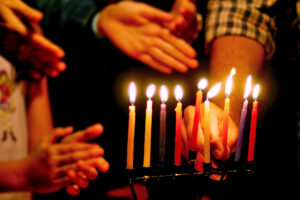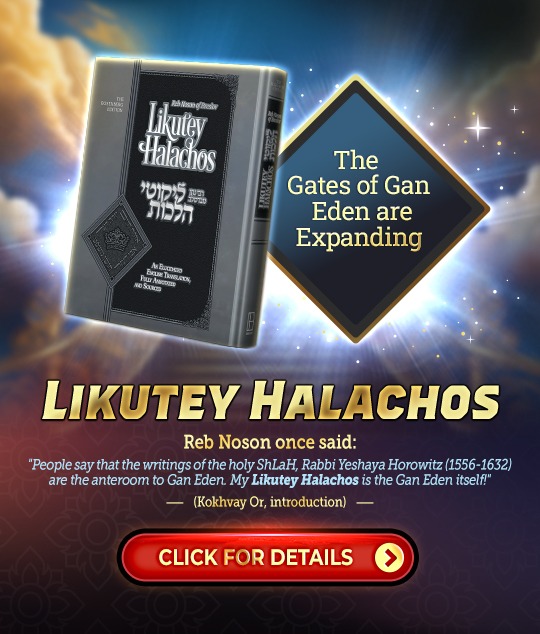- Israel ⬦ Read ⬦ Redemption ⬦ Shabbat ⬦ Weekly Torah Portion
Parshat Beshalach – The Easy Access of Plishtim
Reb Noson, in his discourse in Likutey Halakhot (Ishut #4), delves into the opening verse of this week’s parsha. Remarkably, his insights resonate with the ongoing events in the current conflict in Israel and free Palestine. Explore Reb Noson’s reflections from over 200 years ago on the enigma surrounding the Philistines (Plishtim).
The parsha begins with the account: “And it was, that when Pharaoh sent out the nation,” Despite the logical proximity of the Philistine route, Hashem chose not to lead them in that direction. Logically, departing from Egypt, the most direct way to enter the Holy Land would be through the coastal plain of the land of Plishtim, bypassing the Sinai Desert and other detours. However, the parsha notes that the Lord did not direct them along that route.
Why did Hashem make this choice? The Torah provides an explanation: “Because perhaps, lest the nation has second thoughts when they see themselves fighting a battle [to enter the Holy Land].” From fear of the battle and the potential desire to retreat, considering the easy route to return to Egypt, Hashem foresaw a risk.
Reb Noson eloquently unveils the significance of the opening verse: The departure from Egypt, synonymous with the realm of evil and impurity, is a pivotal moment. The Jews had descended to level minus 49 of impurity, and they could have reached minus 50 had Hashem not intervened. Leaving Egypt signifies a profound spiritual elevation, a resurgence in connection with Hashem.
As the verse unfolds it captures the instance when Pharaoh, representing the forces of evil, allows the Jews to depart, granting permission to step out of the domain often referred to as the “exchange chambers.” In this pivotal moment, Hashem is meticulous in guiding the spiritual journey of a person. The precise handling is necessary due to the delicacy of the process.
The verse continues highlighting Hashem’s carefulness. The Lord ensures precision in the process, recognizing its sensitivity. Hashem does not permit entry into holiness, symbolized by the Holy Land, through the route of Plishtim. Reb Noson delves into the meaning of Plishtim, drawing a grammatical connection to the term Mefulash.
Mefulash denotes an open passage from end to end, much like an alleyway. Reb Noson correlates this concept with Plishtim, emphasizing that Hashem, in facilitating a person’s return from impurity to holiness, avoids the straightforward, unimpeded path symbolized by Mefulash. Instead, Hashem guides the individual through a nuanced journey, preventing a direct ascent without challenges, detours, or boundaries.
Reb Noson’s interpretation underscores Hashem’s meticulous care for the individual’s benefit. The intention is to safeguard against a hasty entry into holiness—similar to the concept of Mefulash—where the spiritual ascent occurs effortlessly, akin to entering from the bottom and emerging at the top. Hashem’s guidance is deliberate, ensuring a more profound and meaningful spiritual journey.
Why? Because it’s too close. A Jew, in his journey toward purification and closeness to Hashem, requires time. Time to transform. It’s not an overnight process. Yesterday, he might have been in pubs, smoking on Friday nights – and suddenly, he transforms, cutting off his hair, growing long peyos and a beard, donning a talis, feeling like a different person. But this transformation doesn’t happen overnight; it requires a process. Patience is key—a virtue for the individual’s own good. Hashem’s intention in making a person wait is to cultivate a deeper spiritual desire and yearning, which emerges when one faces obstacles and experiences delays.
Here, the Torah emphasizes “Ki karov hu,” meaning it’s too close. This closeness implies several things. Primarily, the individual needs to become a spiritual soldier, deserving of entering holiness. The best way to test a person is to make them wait. Waiting reveals one’s true character—how they handle pressure, waiting, and the “cooking” process. It tests their patience, a quality intertwined with emunah (faith). The Torah asserts that it’s too close for a person to enter the realm of holiness in the Plishtim format.
When adversity strikes, the attribute of patience allows a person to approach situations calmly
The Torah questions: Why the need for a patience stage? Why not let the person leave the darkness and enter holiness directly? Isn’t that the desired outcome? Because the Lord says that a person lacks the expertise of patience. Rebbe Nachman, in Likutey Moharan Lesson 24, refers to patience as the highest level, the Keter, which serves as the gateway to holiness. Mastering patience becomes a prerequisite for entering this highest level.
So, Hashem emphasizes that if a person lacks patience, he might entertain second thoughts. Quick transitions from one realm to another may leave the individual unprepared for the tests and tribulations that follow. Without the necessary vessels built through obstacles, waiting, and detours, the person may face challenges unprepared. Lest the nation has second thoughts when confronted with battles, the reality of Jewish life may seem more daunting than initially perceived.
In a life where things unfold too rapidly and an individual hasn’t built resilience through waiting, there’s a risk of facing challenges with a mindset of “I don’t need this.” The greatest gift in creation, Hashem’s “waiting process” becomes a crucial aspect of developing patience. Mastery of waiting becomes the strongest vessel to counter life’s tests. Patience allows individuals to approach challenges with a settled mind, avoiding impulsive reactions. It serves as a tool to think things through, preventing unnecessary panic or assumptions.
When adversity strikes, having mastered the attribute of patience allows a person to approach situations calmly. Instead of reacting impulsively, one can analyze the situation with a clear and patient perspective. The challenges, difficulties, and tests may not be as daunting as they initially seem. The settled mind, grounded in the reality of Hashem’s love and the understanding that tests are within one’s capacity to overcome, becomes a source of strength. Patience, as Hashem’s gift in creation, becomes a guide to navigating life’s challenges with a balanced and composed outlook.
Connecting this to the contemporary cry for “free Palestine,” Reb Noson provides a spiritual perspective. Many desire a quick fix, akin to a Plishtim mentality, seeking an easy way in the physical and spiritual dimensions. “Free Palestine” reflects the wish for an uncomplicated, instantaneous solution—easy teshuva, effortless Judaism, instant financial success. The Torah counters this attitude, emphasizing that Hashem knows what is truly beneficial. Waiting, the Torah asserts, is a profound gift in life.
The message is clear: while the world clamors for a “free Palestine,” the deeper spiritual meaning underscores the importance of patience. Hashem’s plan involves waiting, earning, and working for rewards. The Torah teaches that waiting is a test for everyone. As Reb Noson aptly stated, “Salvation comes to those who wait for it.” The key lies in enduring and waiting until the doors of salvation open.
Shabbat Shalom
Meir Elkabas
- 0 comment






















